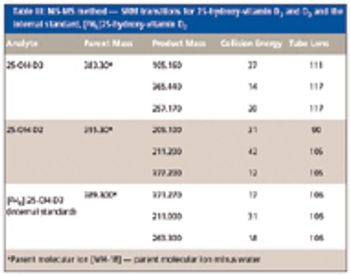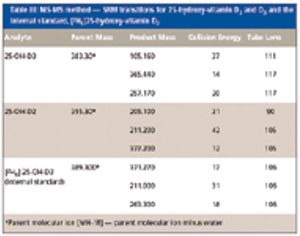Articles by Jeffrey Zonderman

Measuring volatile phenols in wine is essential in ensuring superior wine quality. A new analytical technique, called solid-phase mesh-enhanced sorption from headspace (SPMESH), was modified with direct immersion (DI) conditions and coupled to direct analysis in real time–mass spectrometry (DART–MS) to be used to detect smoke taint in winemaking.

The use of mass spectrometry (MS) in clinical diagnosis goes back to the early 1970s with the application of gas chromatography (GC)–MS to the determination of a variety of biologically significant molecules. Because GC requires a certain level of analyte volatility, and since most biologically active molecules are polar, thermolabile, and involatile, elaborate extraction and derivatization protocols needed to be devised to make GC–MS useful for the analysis of clinically relevant samples. To make sample analysis less difficult by MS there had been a significant amount of R&D invested over several decades aimed at coupling high performance liquid chromatography (HPLC) with MS since HPLC is a much better separation technology than GC for polar thermolabile biologically relevant molecules. This coupling was not without significant challenges; most of the LC–MS coupling techniques that evolved during the 1970s and 1980s were not very successful, and many of those that enjoyed some widespread..





